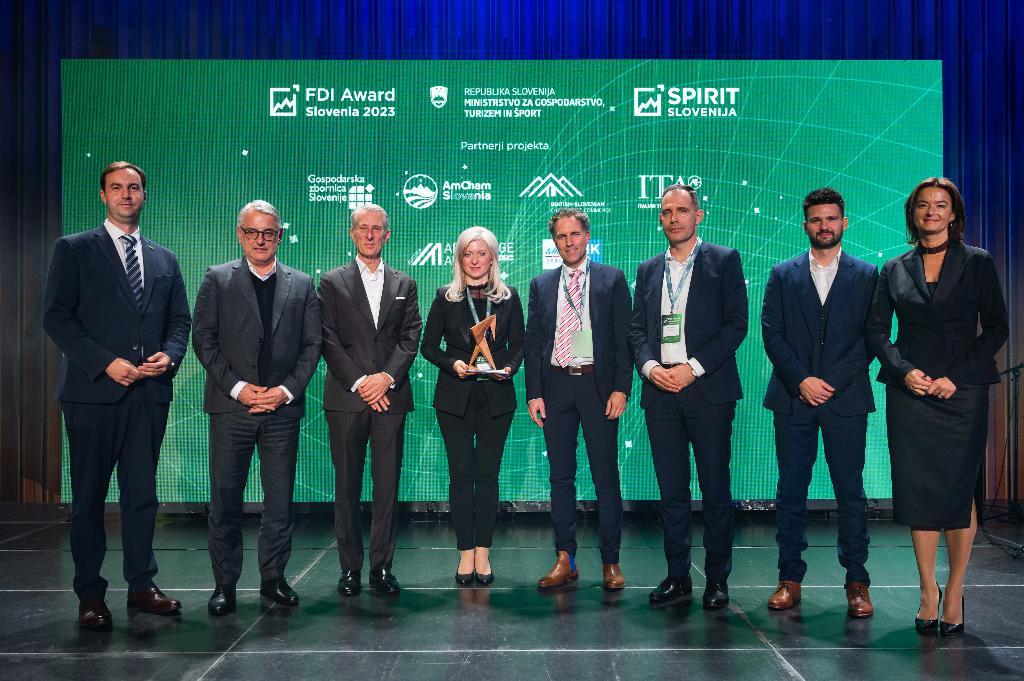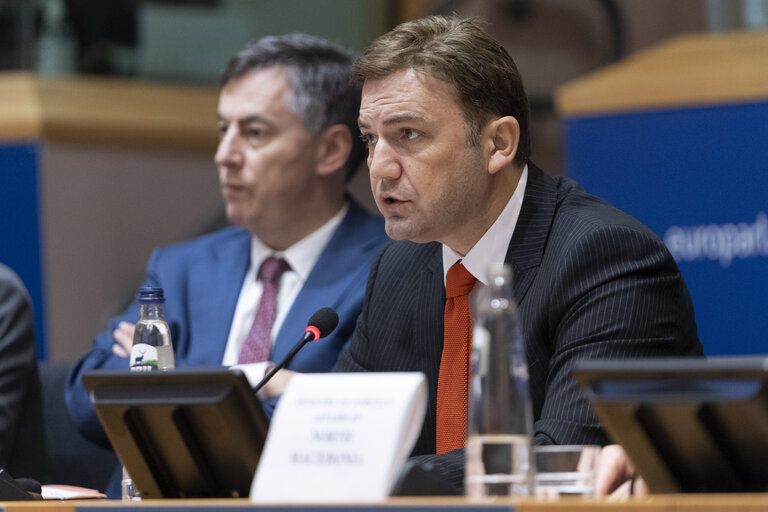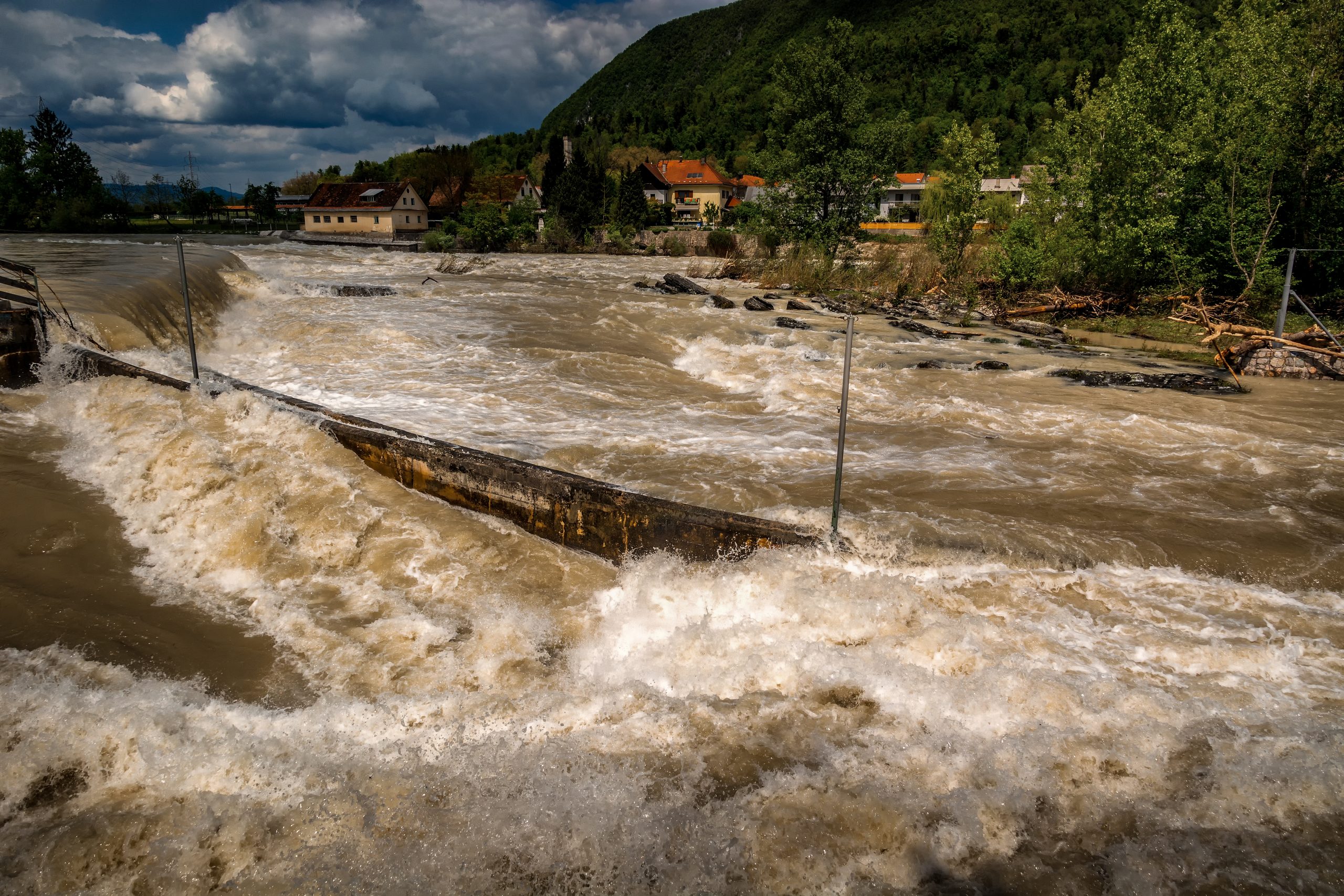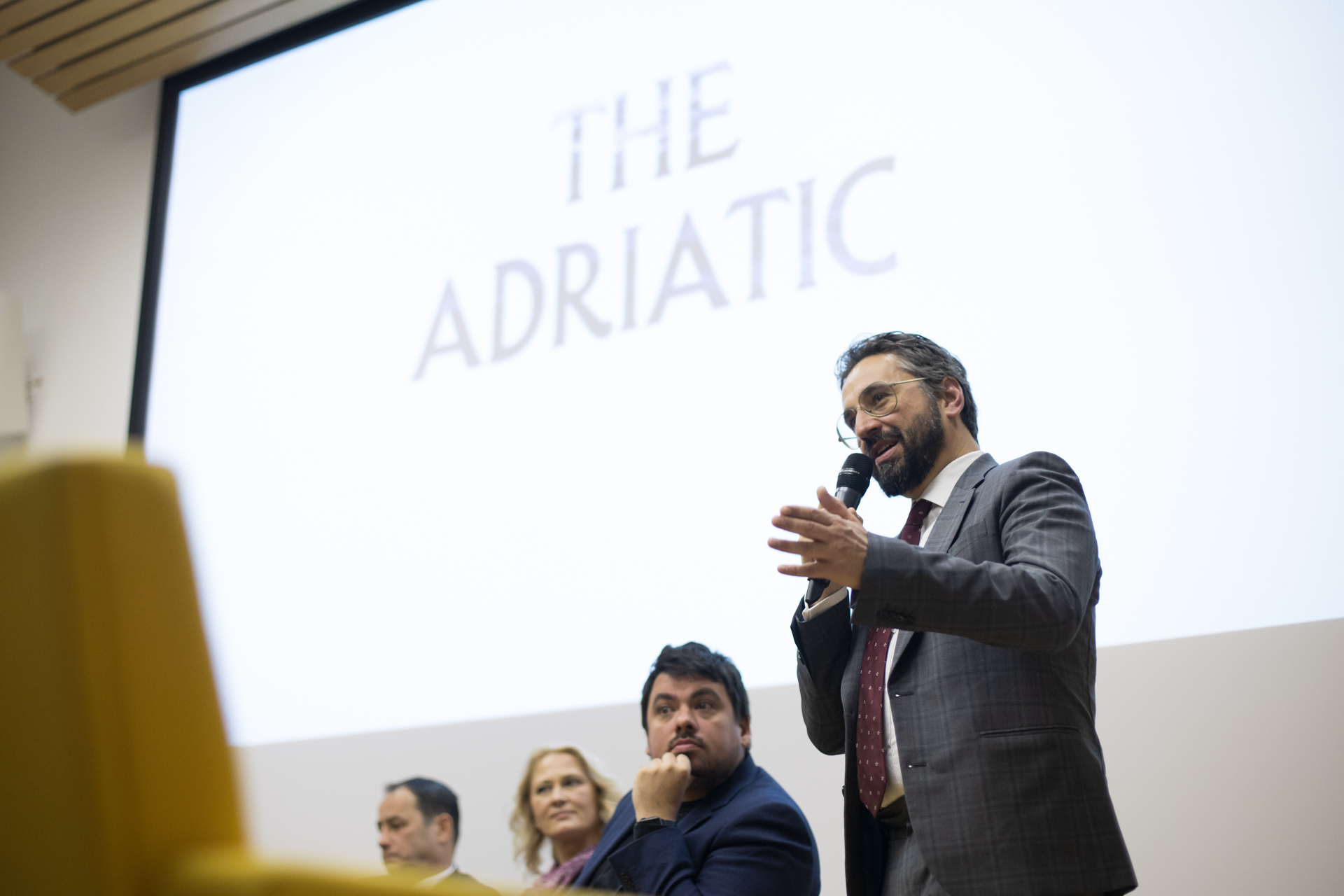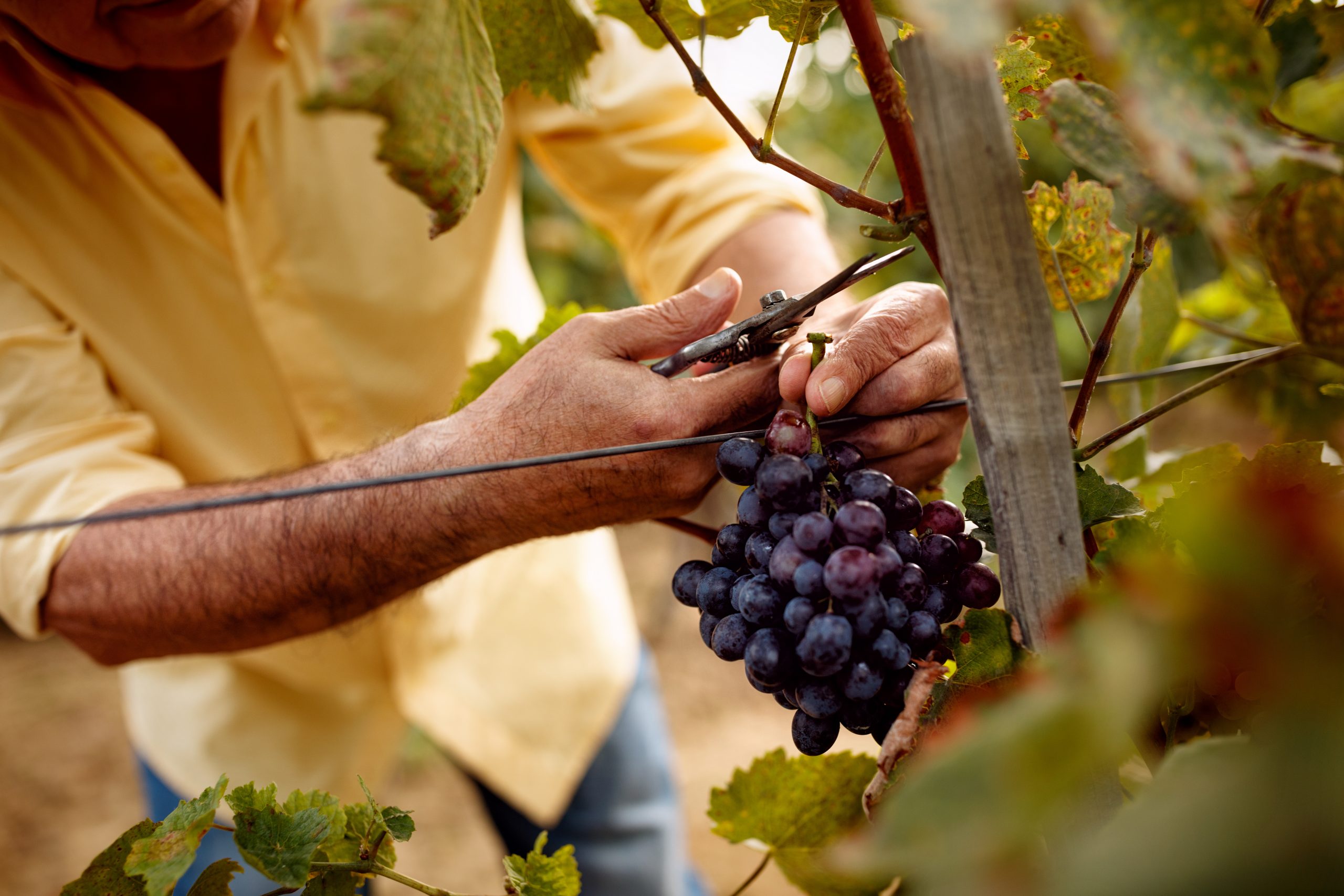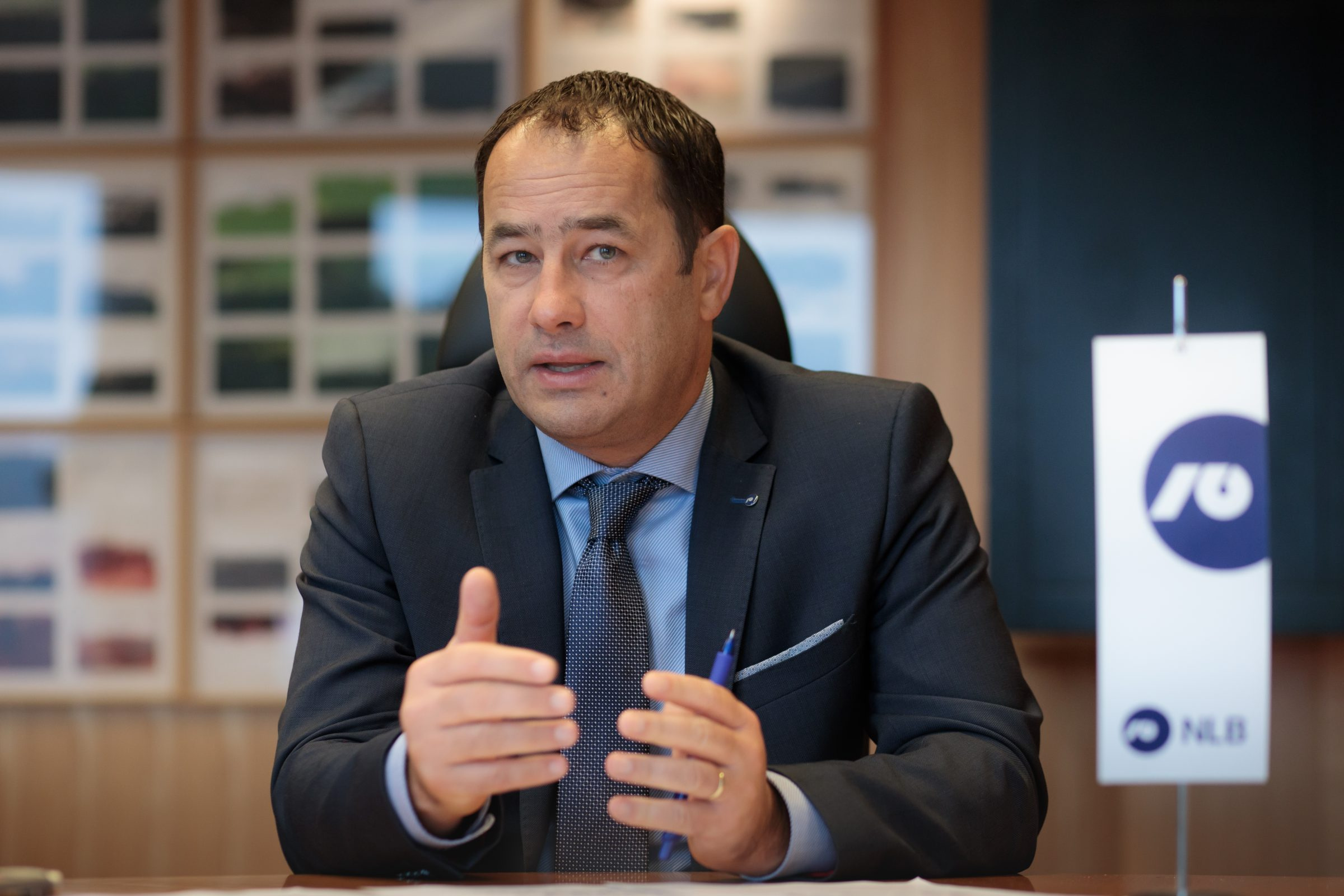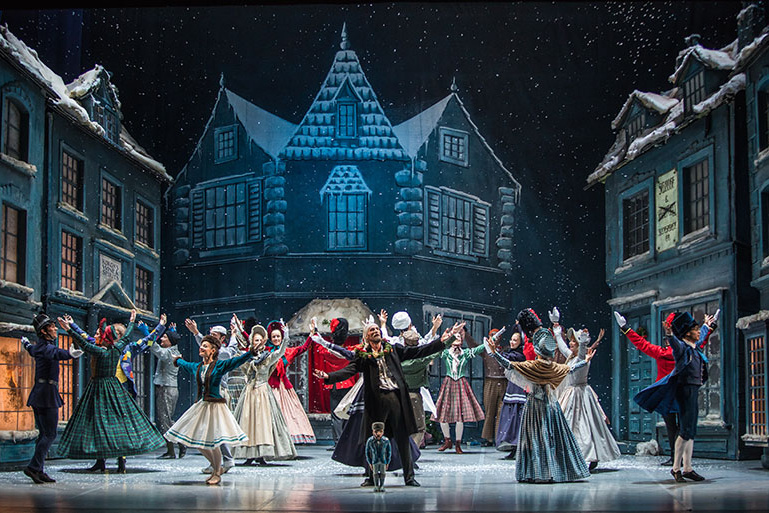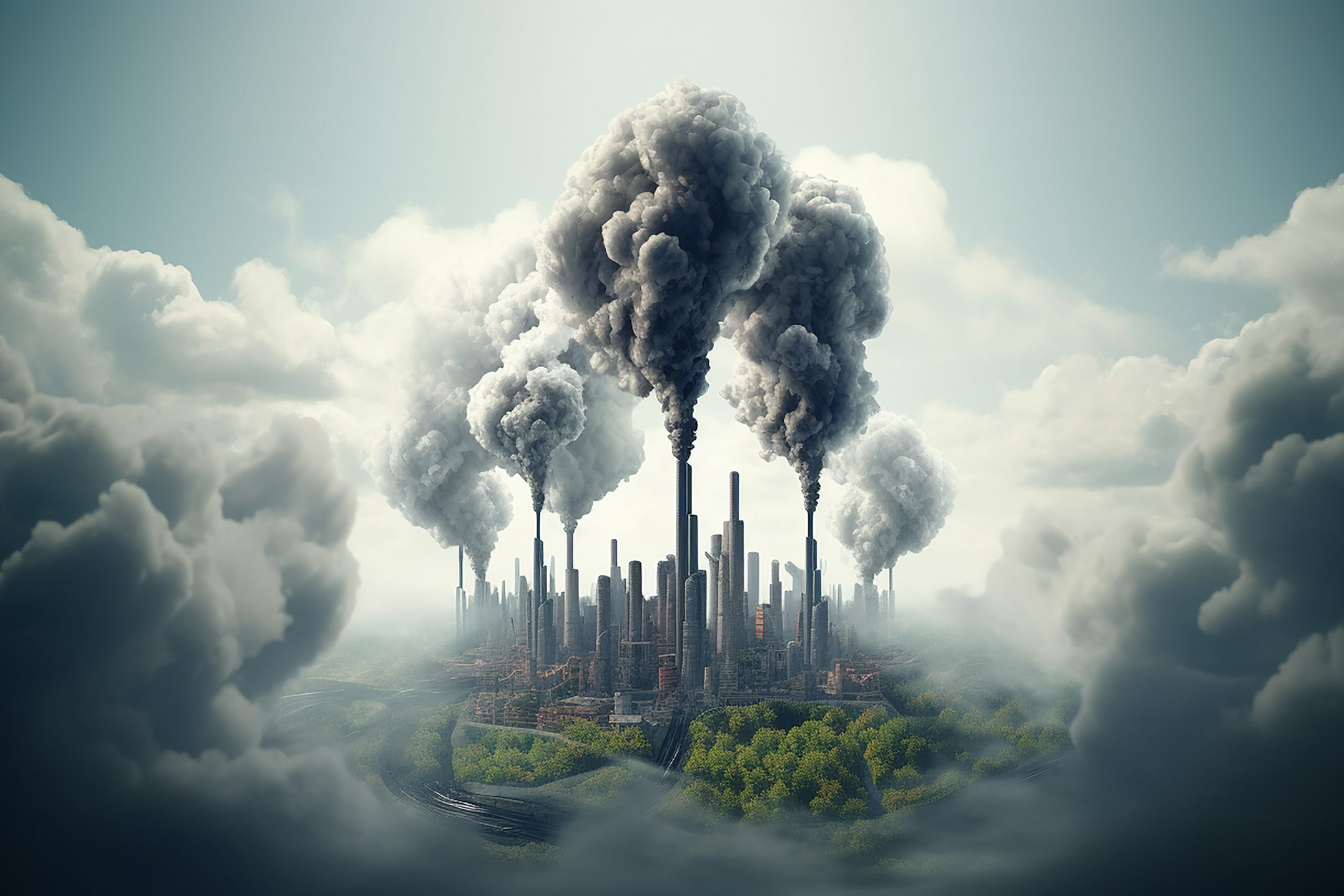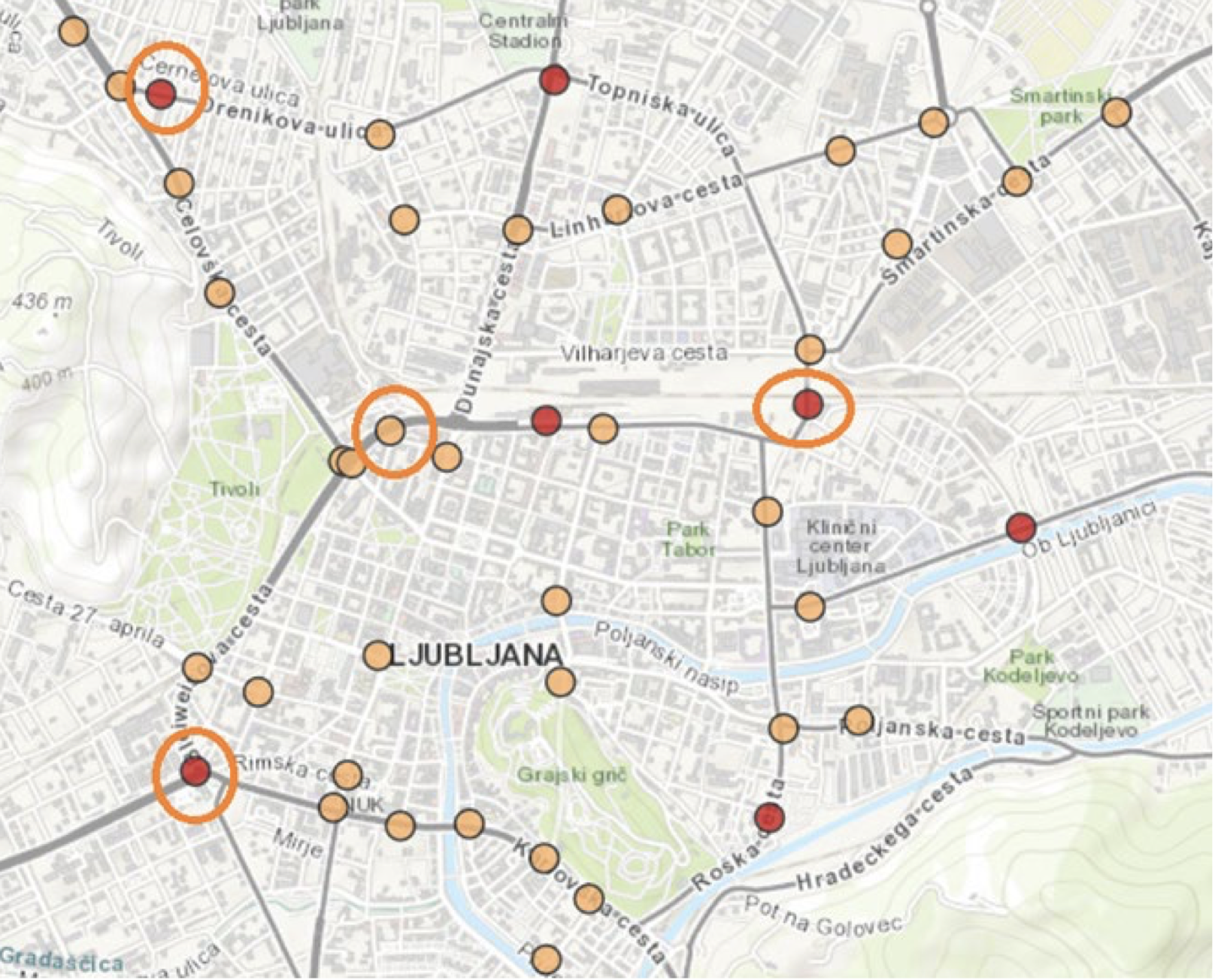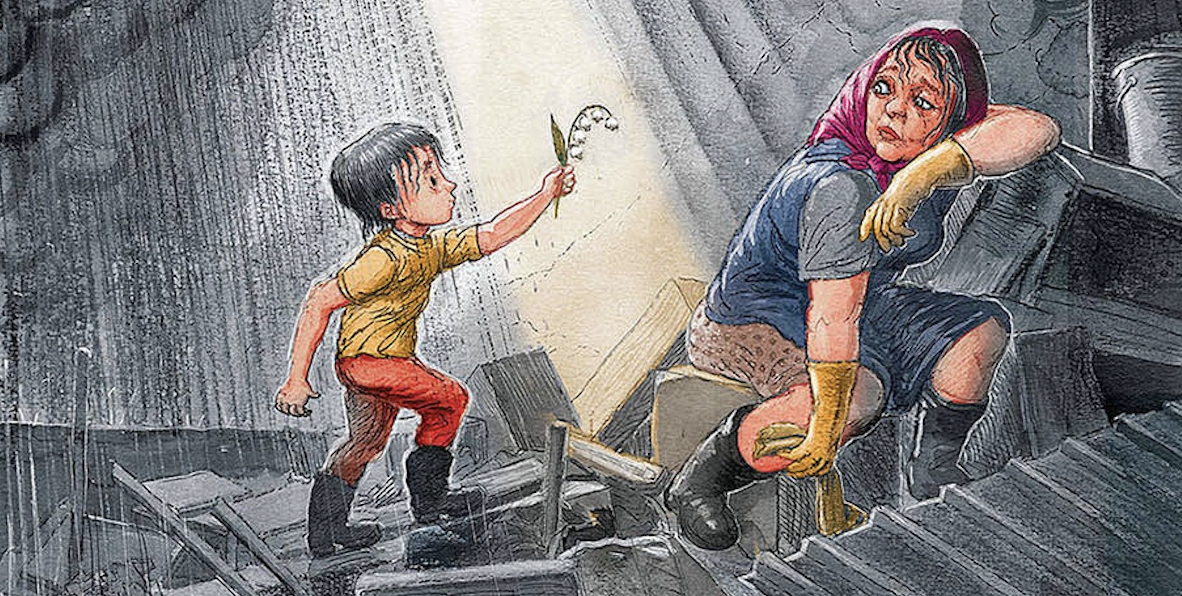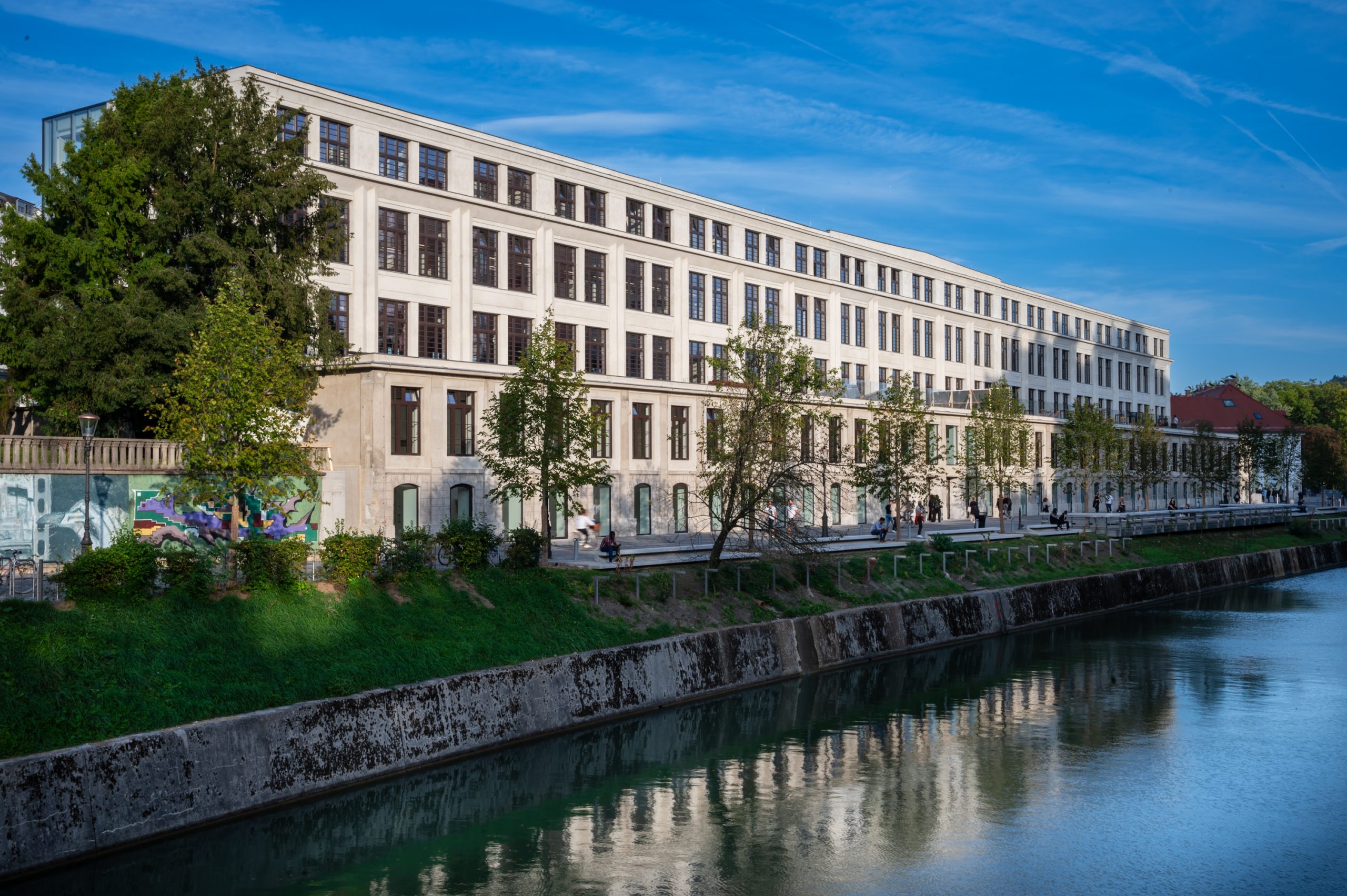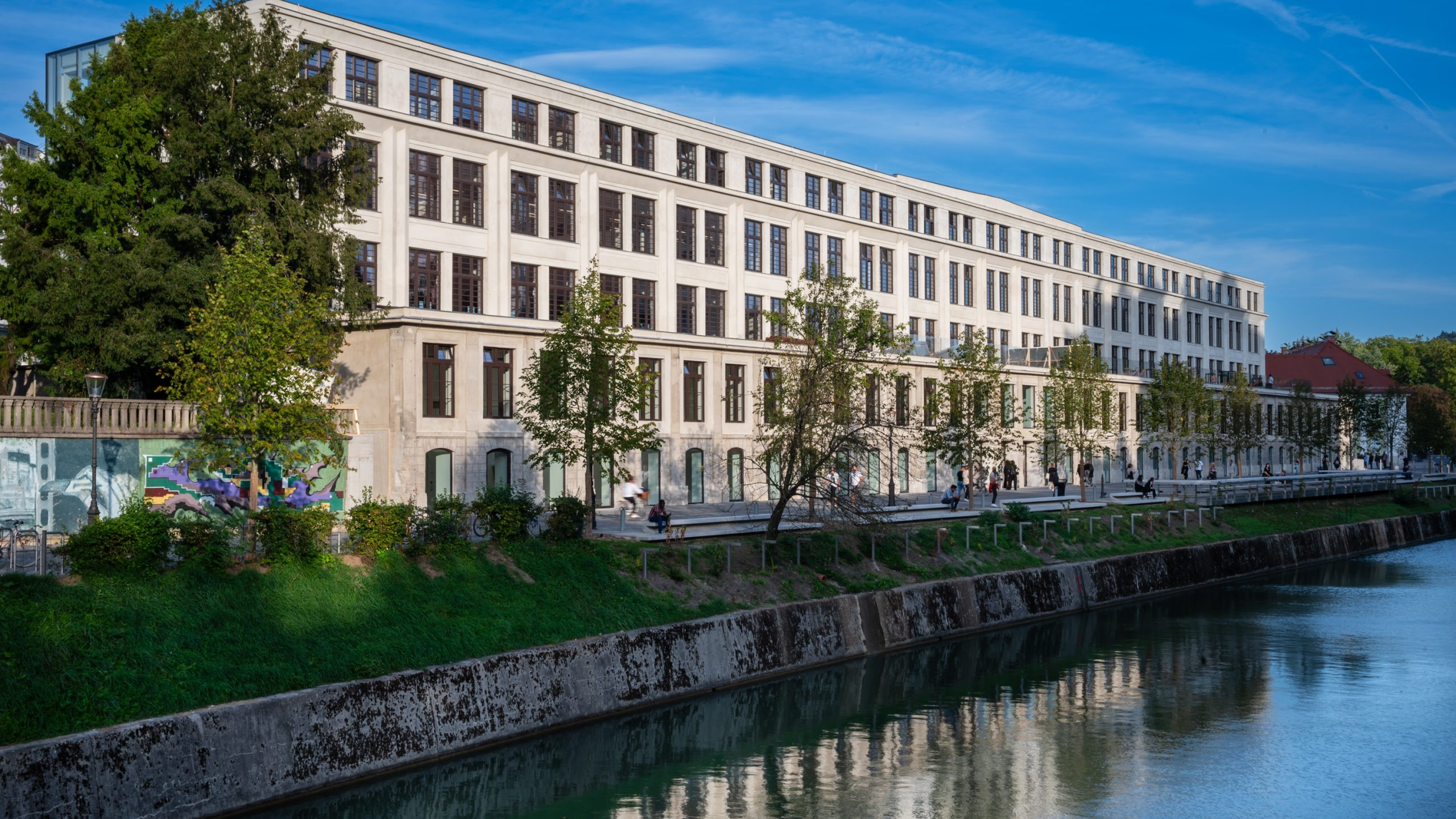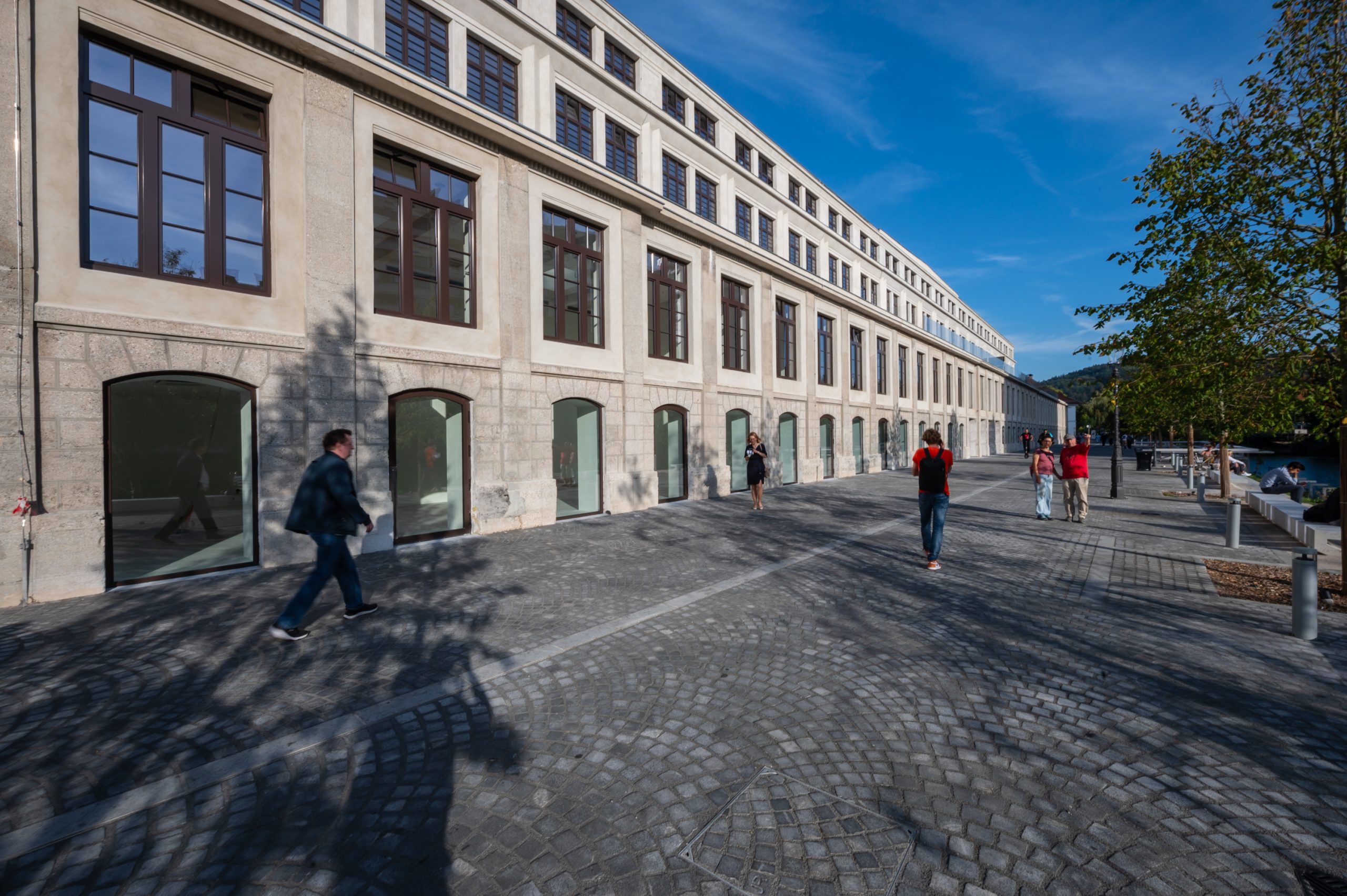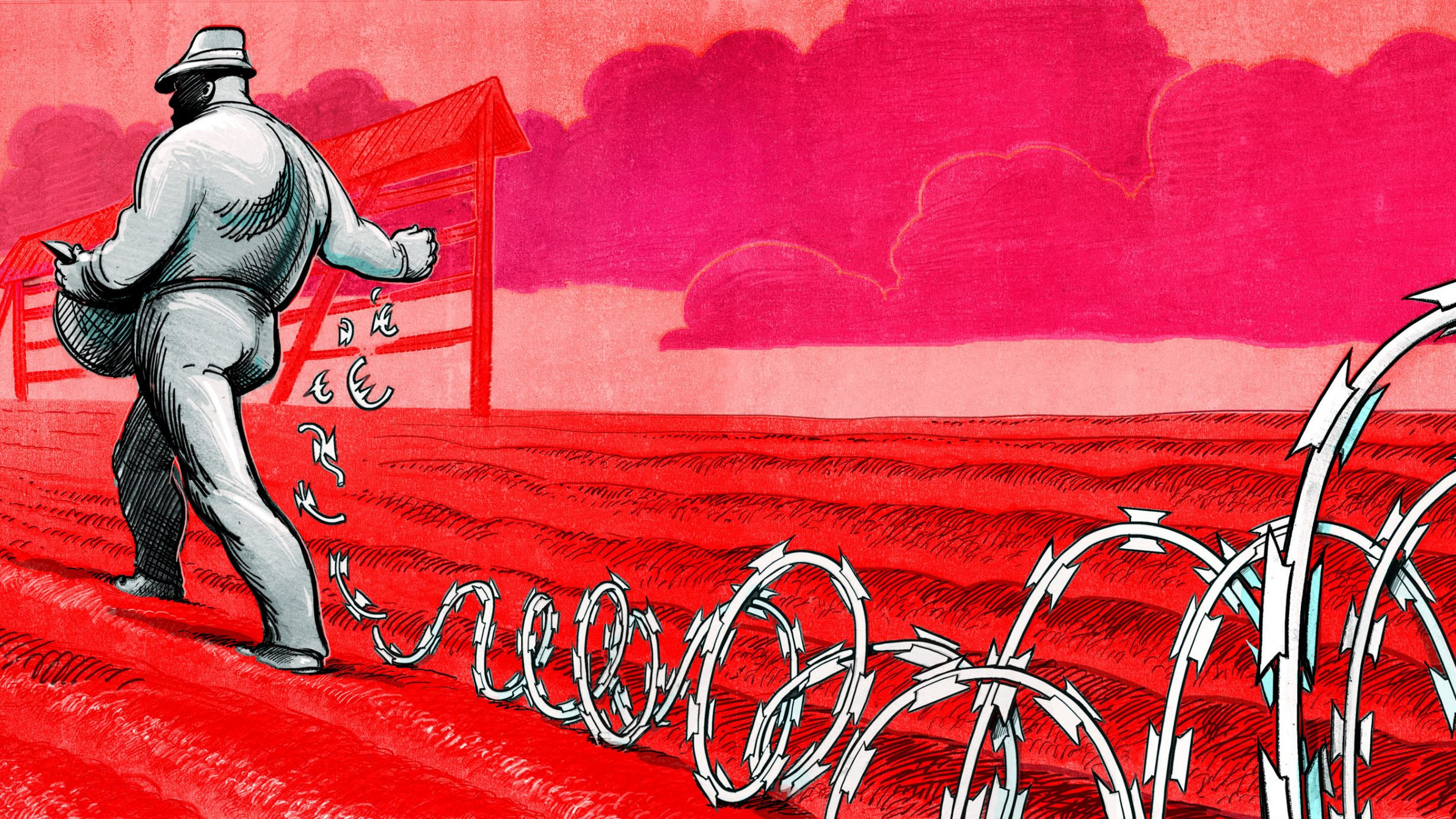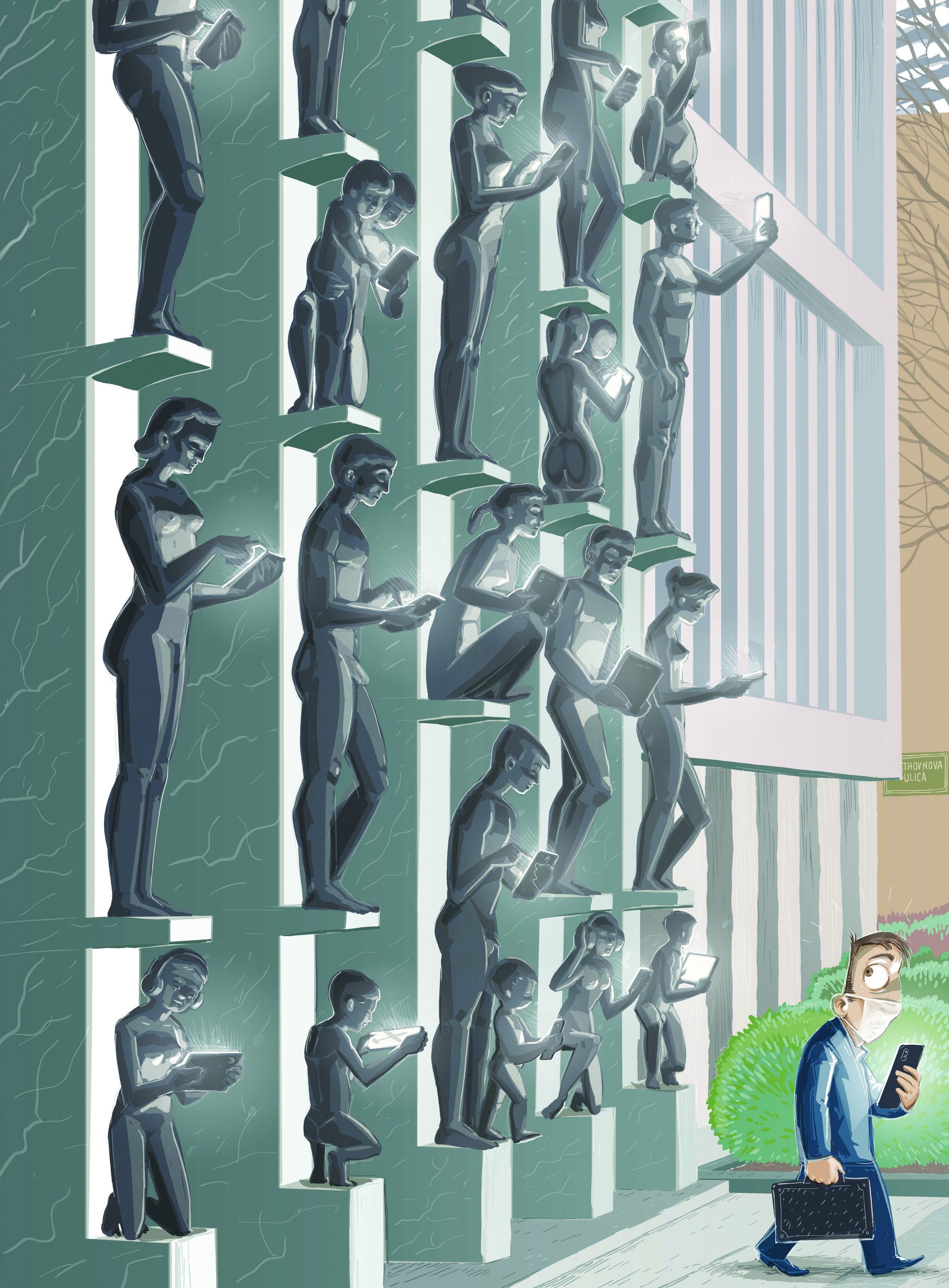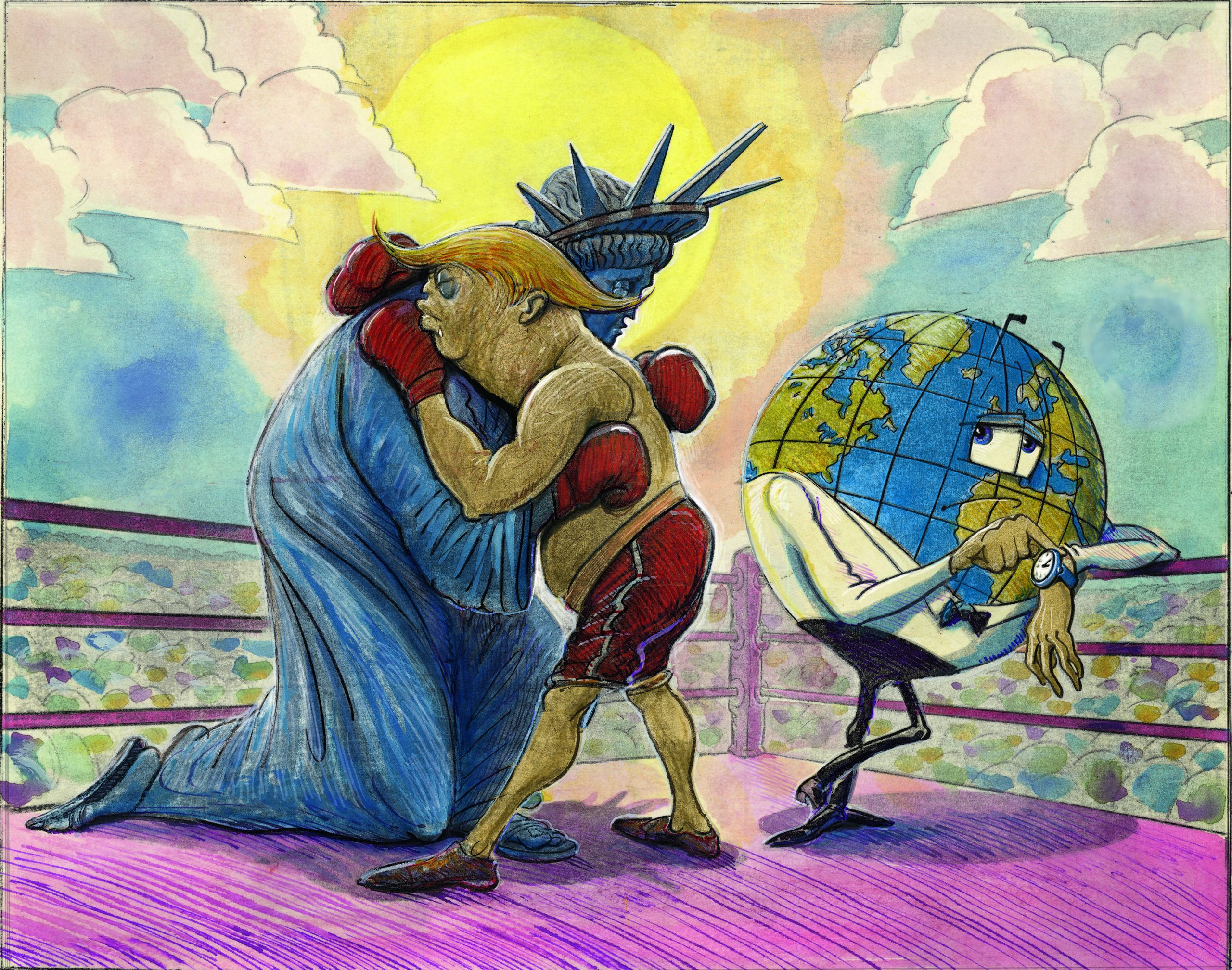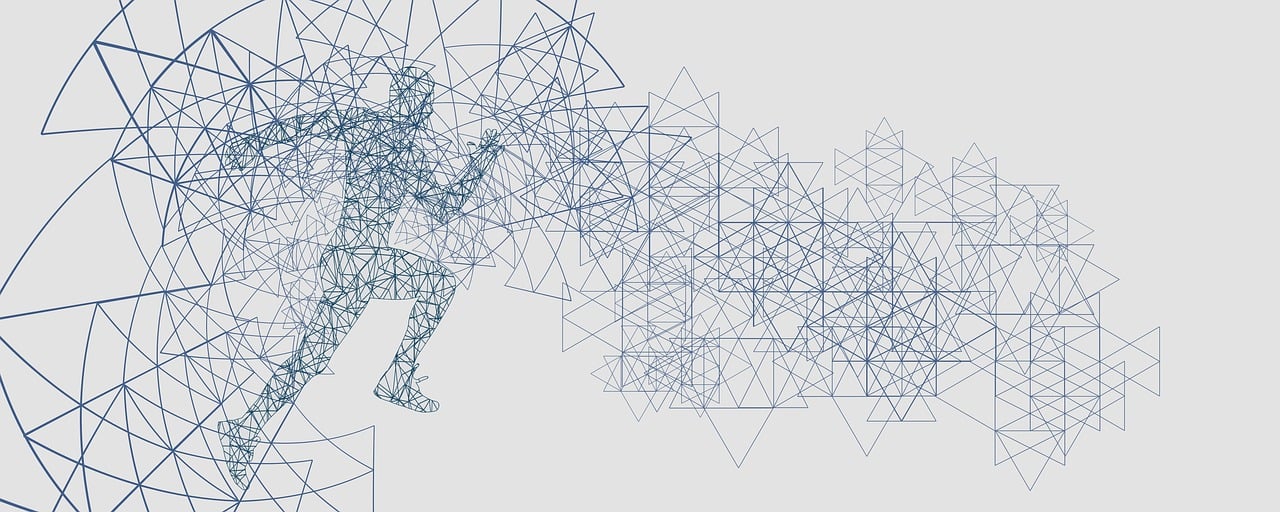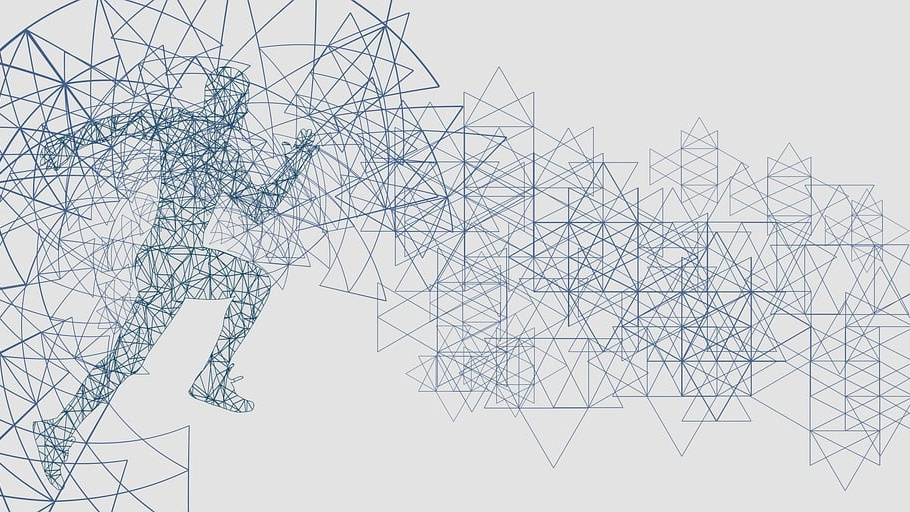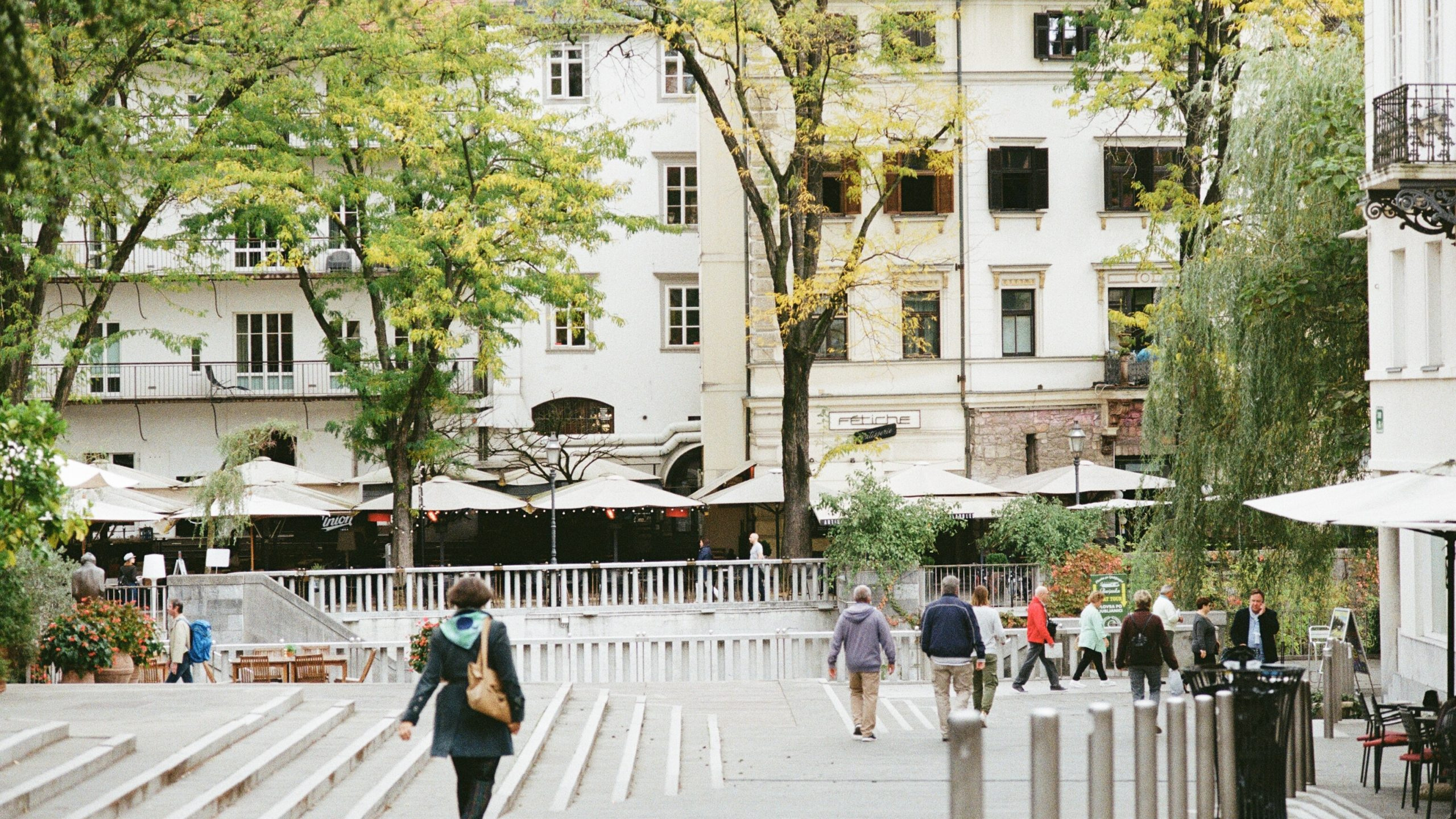Slovenia Honors Top Foreign Investors at FDI Award Ceremony 2023
Digital Transformation
editor
By Maja Dragovic
In a prestigious ceremony at the Ljubljana Exhibition and Convention Centre, SPIRIT Slovenia, in collaboration with the Ministry of Economic Development, Tourism, and Sport, bestowed accolades upon the foremost foreign investors of 2023. Recognizing outstanding contributions to the Slovenian economy, the FDI Award Slovenia 2023 celebrated the achievements of Carthago, Boxline UCL, Elan, and SPAR Slovenia.
In a tradition dating back to 2006, SPIRIT Slovenia has been lauding the accomplishments of foreign enterprises expanding their operations and workforce in Slovenia. These awards underscore the pivotal role played by foreign investors in fostering economic growth, job creation, and technology transfer. Against the backdrop of a globalised business landscape, the FDI Award Slovenia acknowledges the symbiotic relationships formed between foreign owners, Slovenian employees, suppliers, and customers.
Matjaž Han, Minister of Economic Development, Tourism, and Sport, expressed Slovenia’s appreciation for foreign investments, stating, “In Slovenia, we are well aware of the significance of investors for our country, as their investments have multiple effects on our economic growth.” He highlighted Slovenia’s recent success in increasing foreign direct investments, which reached EUR 20.2 billion in 2022, an 8% rise from the previous year. The influx of investments has been increasing for the sixth consecutive year, with most coming from Austria, Luxembourg, Switzerland, Croatia, and Germany. Han underscored Slovenia’s position as an encouraging, stable, and secure business environment and outlined the nation’s vision to become a leading European hub for research and development.
Tanja Fajon, Deputy Prime Minister and Minister of Foreign and European Affairs, highlighted Slovenia’s economic growth since 2006, with investments surging by over 200%. She noted this is also the result of Slovenia’s recent diplomatic efforts, especially during its bid for non-permanent membership in the United Nations Security Council. “On many of these journeys, strong economic delegations accompanied us,” she noted, referring to official visits to countries like Uzbekistan, Kyrgyzstan, Qatar, and Vietnam. »During the visit to Vietnam, Luka Koper and the Vietnamese electric vehicle manufacturer VinFast signed a cooperation agreement on the transport of vehicles of this brand through the port of Koper. With this, Luka Koper became the entry point for Vietnamese electric vehicles.« As Slovenia gears up for UN Security Council membership in 2024, Fajon anticipates continued diplomatic and economic initiatives on the global stage.
Rok Capl, Acting Director of SPIRIT Slovenia, expressed Slovenia’s objective to establish lasting partnerships with foreign investors. “The goal of our country is not only to attract foreign investors but also to create long-term strong partnerships with them.” Capl highlighted the success of SPIRIT Slovenia’s program, involving over 80 companies, designed to support existing foreign investors in overcoming challenges and fostering growth. He emphasized the program’s effectiveness in helping companies navigate various business environments.
The winners
The FDI Award recipients in various categories were:
Large Enterprise category: CARTHAGO, d. o. o. Carthago, established in 2008, emerged as a leading manufacturer of high-end recreational vehicles in Slovenia. With a recent investment of over 50 million euros in a state-of-the-art facility in Ormož, Carthago continues to be a beacon of excellence, contributing significantly to economic growth and employment in the region.
Small and Medium-sized Enterprise category: BOXLINE UCL, d. o. o. Founded in Milan in 1985, Boxline has evolved into a major player in maritime transport. In Slovenia, it has demonstrated exceptional growth over the past four years, quadrupling their revenue with just 46 employees, resulting in EUR 82m in revenue, EUR 2min profit, and over EUR 100,000 in added value per employee. With a commitment to neutrality and reliability in their shipping services, Boxline has expanded its presence to six European subsidiaries within just 12 years.
Green, Creative, and Smart Category: ELAN, d. o. o. Elan, headquartered in Begunje, is a part of the KJK SPORTS group, excelling in winter sports, nautical endeavors, composites, and sports facilities. Boasting a revenue increase of 39.6% to EUR 130m in 2022, Elan is a trailblazer in innovation, sustainability, and corporate responsibility, epitomizing excellence in the Slovenian business landscape.
Significant Impact on the Slovenian Economy Category: SPAR Slovenia, d. o. o. As part of the SPAR Austria conglomerate, SPAR Slovenia has been a key player in the Slovenian retail sector since 1991. With over 110 stores, 8 restaurants, and more than 5,000 employees, SPAR Slovenia has consistently recorded growth in revenue, profitability, and community support, standing out as a socially responsible retail giant.
Breathless in Ljubljana: Unveiling Air Quality Realities
Pollution
editor
By Alenka Žvikart
In the hustle and bustle of daily life, the air we breathe might not be getting the attention it deserves. The startling fact that the average adult inhales between 10,000 and 20,000 liters of air daily prompts us to question our vigilance towards air quality. With polluted air emerging as the foremost environmental risk, as many as 7 million lives are claimed globally each year due to its consequences. In the European Union, over 400,000 individuals succumb annually, with Slovenia witnessing the loss of 1,800 lives to pollution'sdetrimental effects.
Fierce competitor
Beyond the toll on human health, polluted air extracts a substantial economic cost. In 2020, healthcare expenses for treating conditions stemming from polluted air exceeded EUR 166 billion in the EU. Closer to home, healthcare costs related to air pollution for the residents of Ljubljana and Maribor surpassed 541 million euros in the same year.
Slovenia grapples with pollution primarily from motorised road traffic and stoves using wood biomass. Geographic factors, such as poor ventilation and temperature inversion, also contribute to the persistence of this issue.
The major air pollutants of concern are particulate matter (PM10 and PM2.5), nitrogen oxides (NOx), and ground-level ozone (O3).
Challenges and comparisons
While Ljubljana has seen an improvement in air quality over the years, the levels still hover at unhealthy thresholds. According to the World Health Organization, air quality is deemed good when PM2.5 measures less than ten micrograms per cubic meter. In 2021, Ljubljana reported a PM2.5 concentration of 16 micrograms per cubic meter, indicative of room for improvement. However, this is still notably cleaner than cities like Sarajevo, where PM2.5 concentration exceeds WHO guidelines by almost 16 times.
The Institute for Environment and Health in Slovenia recently undertook a comprehensive exploration into the air quality in Ljubljana. Focusing on measuring nitrogen dioxide (NO2), a prominent air pollutant generated primarily by road traffic, the campaign “Attention! Breathing is Dangerous Here!” unfolded in two phases. Initial measurements in February 2021 spanned 153 locations in Ljubljana, with a follow-up throughout the year at four locations identified with the poorest air quality. Those are: Drenikova street near GIB, Šmartinska street, intersection of Bleiweisova-Tržaška streets and Vošnjakova Street.
As the data unravels, it becomes evident that the battle for clean air is ongoing, and collective efforts are imperative to ensure the well-being of both the populace and the environment.
Serbian artist's masterpiece doubles estimate at Sotheby's auction
editor
By Maja Dragovic
The masterpiece Resting Bashi-Bazouk by the prominent Serbian artist Paja Jovanović was sold in November at the Sotheby's auction for more than twice the estimated price. This captivating oil painting was acquired by the Museum of the City of Belgrade for GBP 240,000, marking the museum's most significant addition to its art collection.
Jovanović’s Resting Bashi-Bazouk is a representation of his orientalist phase, showcasing exceptional attention to detail. The 19th century painting, created using the oil on board technique, realistically depicts a member of the Ottoman army in a moment of rest, dressed in a local costume – a white kilt and a red vest, with two bandoliers and a knife strapped to his belt.
Setting records
in 2018, another artwork by Jovanović was sold at Sotheby’s also exceeding the estimate by threefold. Bashi-bazouks before a Gateway was painted in 1887-88 and became the most expensive artwork sold by a Serbian artist.
Bashi-bazouks, irregular soldiers within the Ottoman army, were enlisted from the regions of Serbia and Albania during the time when these territories were under Ottoman rule. Funded and equipped by the government, they operated without regular pay, uniforms, or identifiable badges. Opting for their local attire, these soldiers were not formally trained for significant military campaigns but proved valuable for assignments like reconnaissance and outpost duties.
Jovanović, a prominent figure in Serbia’s art scene, studied at the Vienna Academy under Karl Leopold Müller. His patrons included King Alexander of Serbia, and his work was exgibited in Vienna, Munich, and Berlin.
Do sredine stoletja se lahko naše življenje močno spremeni
editor
The Adriatic
Ogrevanje ozračja, ki ga povzročajo emisije toplogrednih plinov, ni nepreklicen proces. Lahko ga ustavimo. A če ne bomo ukrepali, bo zaradi pretoplih zim smučanje izginilo na številnih območjih, naše življenje pa se lahko bistveno spremeni, pravi slovenski klimatolog Renato Bertalanič z Agencije RS za okolje.
Na prihodnje temperature bo vplivalo veliko dejavnikov. Vzrok vročinskih valov in temperaturnih ekstremov zadnjih desetletij je v človekovem delovanju, pojasnjuje Bertalanič in razlaga, kako poteka proces segrevanja: »Ozračje se segreva po vsem svetu, glavni krivec za hitro segrevanje pa je človeštvo s svojimi emisijami toplogrednih plinov, predvsem ogljikovega dioksida, pa tudi metana, didušikovega oksida in drugih plinov. Izpust teh plinov povzroča učinek tople grede: ko Sončevi žarki zadenejo Zemljino površje, ga segrejejo, površje pa del te energije kot toplotno sevanje odda nazaj v vesolje. Toplogredni plini povzročajo, da ozračje absorbira več tega sevanja, kar vodi v njegovo segrevanje. Posledično postajajo vsi vročinski ekstremi intenzivnejši, povečuje se število vročinskih valov, nastajajo višje temperature, pojavlja se več vročih dni, število tropskih noči narašča. Vedno več je temperaturnih rekordov, ne le poleti, ampak tudi pozimi. Hkrati pa je vse manj hladnih ekstremov. V zadnjih desetletjih se je povprečna letna temperatura v Sloveniji zvišala za približno 0,4 °C na desetletje.«
Vrnitev nazaj v preteklost
Na vprašanje, ali je mogoče globalno segrevanje ustaviti, Bertalanič odgovarja, da je to mogoče, saj je proces segrevanja povraten. »Proces je povezan s koncentracijo toplogrednih plinov v ozračju. Če ustavimo povečanje koncentracije toplogrednih plinov, lahko ustavimo globalno segrevanje. Če bi takoj prenehali z vsemi emisijami toplogrednih plinov in bi njihova koncentracija v ozračju ostala na sedanji ravni, bi temperatura zagotovo ostala na isti ravni več desetletij, morda celo stoletij. Ker pa v naravi obstajajo ponori ogljikovega dioksida, bi se koncentracija teh plinov sčasoma postopoma zmanjševala, kar bi privedlo do znižanja temperature v ozračju,« pojasnjuje Bertalanič.
»Obstaja optimističen scenarij,« dodaja. »Če bi človeštvo, na primer, aktivno zmanjševalo koncentracijo toplogrednih plinov, na primer z izločanjem ogljikovega dioksida iz ozračja, bi se povprečna temperatura začela zniževati. Toda nekateri procesi, kot sta dvigovanje morske gladine ter taljenje ledenikov in morskega ledu, bi se nadaljevali. Stoletja, celo tisočletja.«
Kombinacija okoliščin
Po besedah dr. Andreje Sušnik, agrometeorologinje, ki vodi Oddelek za meteorološko podporo kmetijstvu na Agenciji RS za okolje, so podnebni scenariji, ki so jih simulirali in analizirali, zaskrbljujoči. Simulacije kažejo spremembe v padavinah in temperaturi zraka ter poudarjajo trend naraščanja meteoroloških dejavnikov. Čeprav so scenariji še negotovi, so soglasni v eni smeri – temperature v Sloveniji bodo še naprej naraščale.
Bertalanič se izogiba napovedim prihodnjih temperatur zaradi prevelikega števila dejavnikov, ki vplivajo na globalno segrevanje. Opozarja pa, da so bile temperature nad 40 °C v Sloveniji zabeležene v Vipavski dolini poleti 2017, pred tem pa avgusta 2013 v Ljubljani, Cerkljah ob Krki, Črnomlju, Mariboru in Murski Soboti.
»Težko je napovedati, kje bo morebiten vrh v tem desetletju. Statistično se ozračje segreva: meseci postajajo toplejši, vsi štirje letni časi postajajo toplejši, povprečna letna temperatura pa narašča. Globalno segrevanje bistveno prispeva k temperaturnim rekordom, vendar obstajajo še drugi dejavniki, ki prispevajo k ekstremni vročini. Suša in suha tla sta neizogibno eden od njih. Za res izjemne temperature je potrebna kombinacija okoliščin, segrevanje pa je le ena izmed njih.«
Vpliv na ljudi
Projekcije kažejo, da bi se slovensko ozračje lahko do sredine stoletja segrelo za dodatnih 0,8 °C do 1,8 °C, pravi Bertalanič. To bi povečalo vpliv vročinskih ekstremov na različne vidike življenja. Eden od kazalnikov za merjenje teh sprememb je na primer število vročih dni – tistih z nad 30 °C. Tropske noči pa so opredeljene kot tiste, pri katerih temperatura ne pade pod 20 °C.
»Število vročih dni in noči negativno vpliva na ljudi. Nekaj teh dni in noči lahko prenesemo, a povečanje njihovega števila predstavlja težavo,« poudarja klimatolog. »V takšnih nočeh se telo ne more ohladiti, zato se ne spočije. Če bo takšnih noči več, bodo nastopile težave,« opozarja klimatolog.
Projekcije kažejo na morebitno podvojitev takšnih noči v Ljubljani na deset do leta 2040. Podobno velja za vroče dni, ki jih ima Ljubljana trenutno povprečno 25. Do leta 2040 naj bi se to število povečalo za pet ali deset, do sredine stoletja (2041–2070) pa na mesec dni. Posledično bodo ljudje vse težje prenašali vroče dni, saj bo manj hladnejših obdobij, ko bi se lahko spočili, pravi Bertalanič.
Pogled mladih
Dostopnost izobraževanja in informacij, predvsem na družbenih omrežjih, igra ključno vlogo pri oblikovanju generacije, ki je ne le bolj informirana o podnebnih vprašanjih, temveč zaradi njih tudi globoko zaskrbljena in v njihovo spremljanje dejavno vključena. To je povzročilo očiten generacijski razkorak v odnosih in ukrepih glede podnebnih sprememb. Natali Buli, 18-letna srednješolka iz Albanije, opaža: »Starejše generacije podnebnih sprememb ne razumejo tako dobro kot mladi. Starejši ljudje v Albaniji se večinoma osredotočajo na težave, s katerimi so soočene neposredno, namesto na vprašanja, ki bodo vplivala na naše življenje čez nekaj let.«
Nujnost podnebnega ukrepanja še dodatno spodbuja zaskrbljenost mladih glede njihove prihodnosti. Matic Hrabar, 19-letni študent biotehnologije iz Slovenije, poudarja: »Na dolgi rok bodo mlajše generacije veliko bolj prizadete. Mi smo tisti, ki dedujemo ta svet od starejših generacij, in mi bomo tisti, ki bomo naslednja desetletja živeli s podnebnimi spremembami.« Podobno Ilma Šahinović, 25-letnica iz Bosne in Hercegovine, izpostavlja potrebo po odpravi napak prejšnjih generacij, medtem ko Ivana Blažin, študentka tretjega letnika inženirskega menedžmenta iz Srbije opozarja na različne vplive podnebnih sprememb na mlade, kot sta slabšanje kakovosti zraka in vode.
Val optimizma
Kljub tem izzivom med mladimi vlada val optimizma in vizija alternativne prihodnosti. Predstavljajo si svet, kjer so njihove potrebe zadovoljene in njihova življenja niso ogrožena zaradi podnebnih sprememb. Ta vizija je sprožila izjemno globalno mobilizacijo mladih, tudi na Zahodnem Balkanu, ki se borijo za svojo prihodnost.
»Mladi smo tisti, ki zahtevamo spremembe,« pravi Buli in poudarja pomen pobude. Jovan Spasovski, 19-letni študent medicine iz Severne Makedonije, temi pritrjuje in motivacijo najde v posledicah neukrepanja.
Pomembno je priznati, da mladi niso le prihodnost, temveč tudi sedanjost. Njihove glasove je treba slišati, podpreti in priznati, če želimo učinkovito nasloviti podnebno krizo. Hrabar ganljivo zaključuje: »Kar me motivira, da še naprej zahtevam podnebno pravičnost, je to, da bomo lahko nekega dne otrokom povedali, da smo se borili … Da smo dali vse od sebe, da bi jih ustavili.«
A Cinematic metamorphosis from death to life
editor
By Alenka Žvikart
Following its premiere in Locarno and Sarajevo, last week Dragan Bjelogrlic's historical drama Guardians of the Formula, has opened LIFFe film festival in Ljubljana. It has won first place at the Sarajevo film festival and received both Pardo Verde Ricola and Variety Piazza Grande at the prestigious Locarno film festival.
The Serbian acting and directing maestro has starred in 92 films, many of which he masterfully guided behind the camera. But this project was one of the hardest, he said.
“This was the most challenging film, by far the most challenging one I’ve undertaken; it took seven years to make,” said Bjelogrlić.
In this latest endeavor, he artfully delves into poignant themes of mortality, malady, the Cold War, and the intricacies of human nature itself. In the absorbing drama Guardians of the Formula«, Bjelogrlic transports audiences to 1958 France and Yugoslavia, unfolding a narrative around a Belgrade nuclear reactor leak. The film’s core explores the relationships among four nuclear researchers treated by Professor Georges Mathe, played by Alexis Manenti of “Les Miserables” fame, the winner of the Cannes Film Festival in 2019 and a French nominee for an Oscar.
As the narrative alternates between events leading to the Belgrade contamination and subsequent treatments in Paris, the film delves into the friendships and romances blossoming amidst adversity.
The ensemble cast, led by Manenti and Radivoje ’Raša’ Bukvić, skillfully portrays the ideological divide bridged by respectful common ground. Despite attempts to infuse Hollywood drama, moments of heavy-handedness are balanced by Manenti’s restrained yet powerful performance. His portrayal of Professor Mathe, a morally-minded figure of the Resistance, serves as a prism illuminating the intricate ideological currents of the Cold War.
Alongside theirs are also performances by the Slovenian actor Jurij Drevenšek in the role of UDBA agent, Dragan Bjelogrlić (portraying UDBA chief Aleksandar Ranković), Predrag Miki Manojlović, Lionel Abelanski, Ognjen Mićović, Anne Serra, Jérémie Laheurte, and others.
A regional collaboration in the truest sense, the film is a co-production between Serbia, Slovenia, Montenegro, and North Macedonia. Slovenia is prominently present in this film, both through the Drevenšek’s significant role and as a key film location: parts of the movie were filmed in the reactor of the Jožef Stefan Institute and other locations in Ljubljana and Škofja Loka.
LIFFe film festival is on until 19 November 2023.
Shaping the future of digital leadership
Digital Transformation
editor
By Maja Dragovic
In a momentous development set to revolutionise the fields of digital leadership and artificial intelligence (AI), the Bled Institute for Leadership in Digital Transformation and Artificial Intelligence (BILDAI) has officially been established. This endeavor is the result of a strategic alliance between IEDC - School of Business Bled and Roche Slovenia, promising significant advancements in technology and leadership.
Prof. Danica Purg, the director of IEDC – School of Business Bled, and Eva McLellan, the general manager of Roche Slovenia, both emphasized the tremendous potential that lies ahead by combining their resources, expertise, and knowledge.
“We are extremely excited about collaborating with Roche Slovenia. We believe that by combining our joint efforts, expertise, and knowledge, we can truly deepen and strengthen the understanding of digital transformation and artificial intelligence on a global level,” said Prof. Purg, underlining the significance of the partnership.
“This is an important moment for IEDC, Roche Slovenia, and the entire community engaged in digital transformation and artificial intelligence.”
Ready for AI
Eva McLellan is convinced that Slovenia, with its knowledge, is just the right size for pilot projects related to leadership, artificial intelligence, and digitalization. She highlighted Roche’s competence in this area: in 2023, it was recognised as the best pharmaceutical company in terms of readiness for artificial intelligence. “Our social responsibility is to contribute with our knowledge in areas where we are experts and leaders. Therefore, we invest in building data infrastructure and in the development of leaders who are qualified to face challenges related to artificial intelligence,” she emphasized and stressed the role of ethics and integrity in leaders. Without these, there is no public trust, and without trust, there is no business, she stressed. IEDC is built on these values, and in Roche, they see an opportunity for Slovenia to become an efficient international hub for artificial intelligence.
This collaboration is expected to deepen and strengthen the understanding of digital transformation and artificial intelligence on a global scale. BILDAI is not just a theoretical concept; it is set to become a central hub for research, education, and innovation in the field of digitalization and artificial intelligence. Its long-term goals encompass the development and design of new educational programs and research projects. Among these initiatives is the creation of a cutting-edge MBA program, “Management of Science and Technologies.”
Additionally, BILDAI will host an annual conference and various symposiums, providing a platform for experts to share their insights and advancements.
Key pillar
The institute will operate in many areas, with healthcare being one of the key pillars. Healthcare has a strong synergistic effect that goes beyond its primary function, as it lays a solid foundation for the advancement and well-being of society as a whole. It acts as a catalyst for the progress of not only physical health but also the social, economic, and educational structures of society.
“In its work, Roche focuses on advancing science to improve people’s lives. As the needs in healthcare systems increase and become more complex, we are aware of the role that artificial intelligence will play in addressing modern challenges. At Roche, we believe that with such strategic partnerships and co-creation, we can provide significantly greater value to society. However, as digitalization requires a profound shift in mindset and a readiness for continuous learning and experimentation, the new institute will also focus on leadership in digitalization,” emphasized McLellan.
Digitalization demands a fundamental shift in mindset and a readiness for continuous learning and experimentation. BILDAI aims to address this by focusing on leadership in digitalization, preparing individuals and organizations to thrive in the digital era.
In the next steps, BILDAI institute will establish its governing bodies and forge partnerships with numerous companies, government entities, and private organizations. This collaborative effort will serve as a cornerstone for driving advancements in digital transformation and artificial intelligence in Slovenia and beyond.
Centre Rog: An Urban Renaissance
editor
THE ADRIATIC TEAM
Photos by: Centre Rog
On the 26 October, at the far end of the Petkovškovo embankment in Ljubljana, where reverberations of the city's historic Trubar street meld with the contemporary urban scene, the iconic Centre Rog has opened its doors once more - a reincarnation that holds the promise of a creative renaissance. Amidst a global era of digitalisation and increasingly superficial interactions, it emerges as a haven for tangible craftsmanship and genuine human connection.
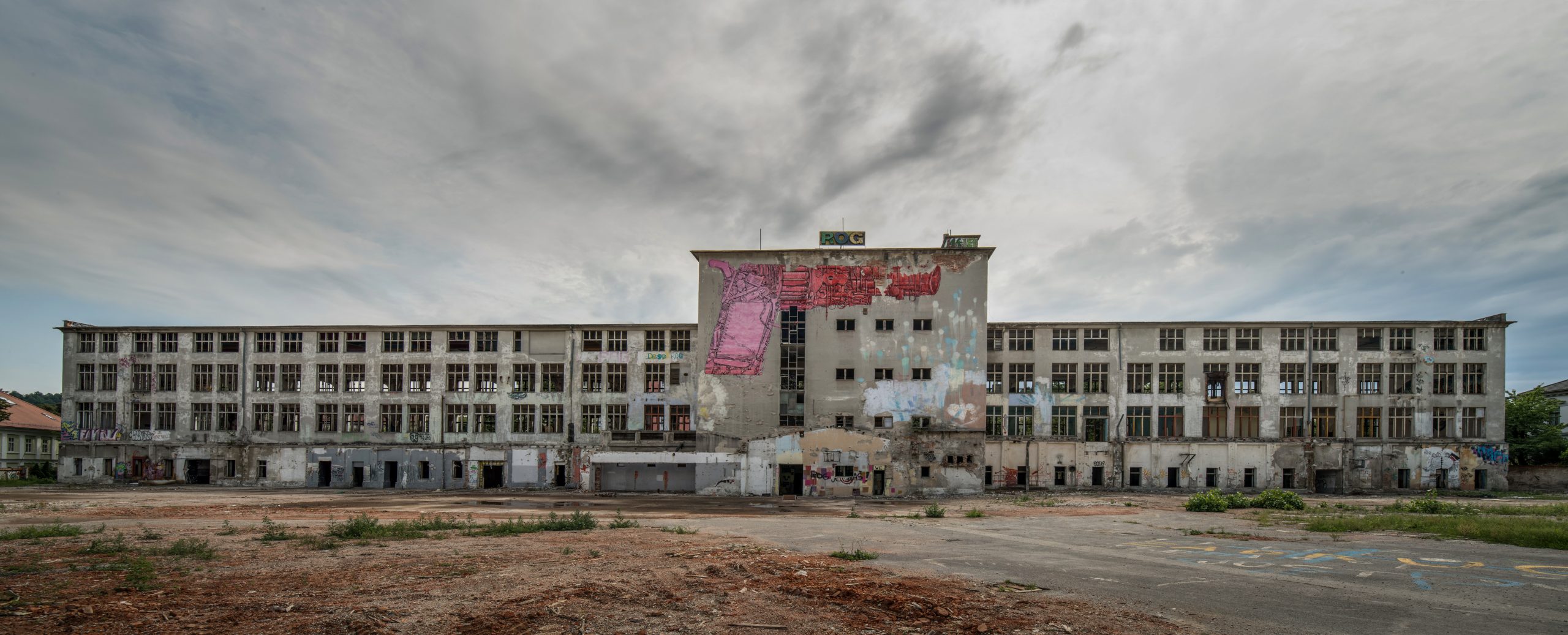
The centre, encapsulated in sturdy yet charming industrial aesthetics, is more than a building; it’s a living testament to Ljubljana’s artistic spirit and its pursuit of enabling a community-centrered workshop for its inhabitants. At the core of this urban oasis will be a collection of nine labs , each serving to fulfill the needs of students from the various faculties of the University of Ljubljana and the creative endeavours of the public, helping shape ideas into reality. Whether it’s metalworking, ceramics, textiles, or 3D printing and laser workshops, there’s a niche for every craftsman that allows their imagination to roam.
Its philosophy of ‘do-it-yourself’ extends an invitation to students, the unemployed, retirees, and asylum seekers, amongst others. With a membership fee as nominal as €15, or €10 for the aforementioned groups, the centre will ensure that the tools and space for creation are within reach for all. Members have the liberty to choose from three different user packages, each tailored for a person’s needs and capacities.
Like in the past, the present iteration of Rog endeavours to foster a diverse community where entrepreneurial and artistic visions meld together. The boutique in the ground floor will offer a variety of items for sale, handcrafted by the centre’s users.
Ascend through the connecting glass foyer, the first floor will house a library with 20,000 units of to choose from. Yet, it’s the specialized collection focusing on design, architecture, and other applied arts that sets it apart, not forgetting a children’s corner dedicated to the little ones.

Rog is a place where the day starts with the noise and whirr of machinery and ends with hearty laughter echoing through the halls. The centre’s restaurants and cafe aren’t just a place to satiate hunger, but a hub where ideas are exchanged over steaming cups of coffee and where the city’s denizens come together to celebrate the joy of making.
Master of Gallows Humour – Ciril Horjak
editor
Alenka Žvikart
JOURNALIST AT THE ADRIATIC
The first thing that might have attracted you to our magazine is the captivating front page. Last year's edition, for example, provides a polarising effect, chaos on one side and serenity on the other - geopolitics in a nutshell. The genius behind the illustration is Slovenian Carinthia's finest, Ciril Horjak.
Horjak was born in Slovenj Gradec, the city of peace, yet his illustrations are anything but peaceful. His witty use of gallows humour translated into comics enables him to tell a story in a matter of seconds, make a lasting impression on the reader and provoke critical thinking all at once. Horjak is a prolific creator working for the Saturday supplement of the Večer newspaper, to which he had contributed a whopping 1800 comics, which took 892 weeks to create in total. His admirable work ethic and a plentiful amount of art, also made among the more hidden areas such as charities and the dental industry, adorned Ciril Horjak with many awards. In 2010, he received an award from the Slovenian Institute for Adult Education and in 2016, he received an award from the Society of Slovenian Journalists.
Admire the art up close
The Gallery S in Ljubljana Castle currently holds an exhibition of newspaper sketches by Ciril Horjak titled Selection. The show portrays only about 2 per cent of Horjak’s vast opus, but the unique ‘rushed art’ style ties all the pieces together. Dr. Horowitz, the author’s creative alias, is always in a hurry to create comic strips so he can report on the current state of affairs as quickly and accurately as possible. “In a way, I’m delighted, joyful even, that the drawings can evoke various emotions, I can’t even imagine it,” says Horjak in an interview. The artist also adds that he usually creates his drawings in a dark cellar apartment, where he does not have a chance to discuss his work. He is consequently pleasantly surprised that the public took such a liking to his art. If you find yourself in Ljubljana in the next couple of weeks, don’t give the exhibition a miss, it is on only until November 5th.
Slovenia's Pioneering Path in Data-Driven Healthcare: A Global Blueprint?
Digital Transformation
editor
Barbara Matijašič
JOURNALIST AT THE ADRIATIC
In the era of digital transformation healthcare is changing swiftly, with patient expectations shaped by experiences in other sectors. Slovenia has set itself an ambitious goal to meet those expectations by 2027 with an e-health strategy that has placed the patient at the centre of the healthcare system.
Slovenia is in a good position to meet the goal, says Elina Drakvik, senior lead at Finnish Innovation Fund Sitra/TEHDAS.
»Slovenia was an early adopter of e-health and almost all health data is digitized«, she notes. »It is clear that Slovenia has made significant advances in accelerating and integrating the use of digital technologies in healthcare, and the Slovenian eHealth Strategy from 2022 identifies key issues for continuing this development and reaching towards excellence.”
The strategy involves reshaping processes, optimizing data use, enforcing robust governance, and ensuring inclusivity. It aspires to make eHealth one of the most efficient, user-focused, and sustainable digital health systems in the European Union. Some of it’s key objectives include:
Better health of the population: Ensure that healthcare initiatives and data-driven decisions lead to positive health outcomes.
Responsive, successful, and stable health system: Build a health system that can flexibly adapt to the evolving needs of the population, ensuring that healthcare services remain effective and reliable.
Higher user satisfaction: Improve satisfaction levels among those delivering and receiving health services.
Fairness in financial contribution: Ensure that access to quality healthcare services is fair and accessible to all.
Implementation is crucial
Successful implementation of digital technologies is, of course, crucial and involves various stakeholders playing vital roles, Drakvik remarks. She adds, however, that Slovenia’s e-health system has strong foundation to build on and can also support integrations with health systems beyond its borders.
“Slovenia has a well-developed health information system with a strong technical infrastructure to support the future implementation of the European Health Data Space«, Drakvik concludes.
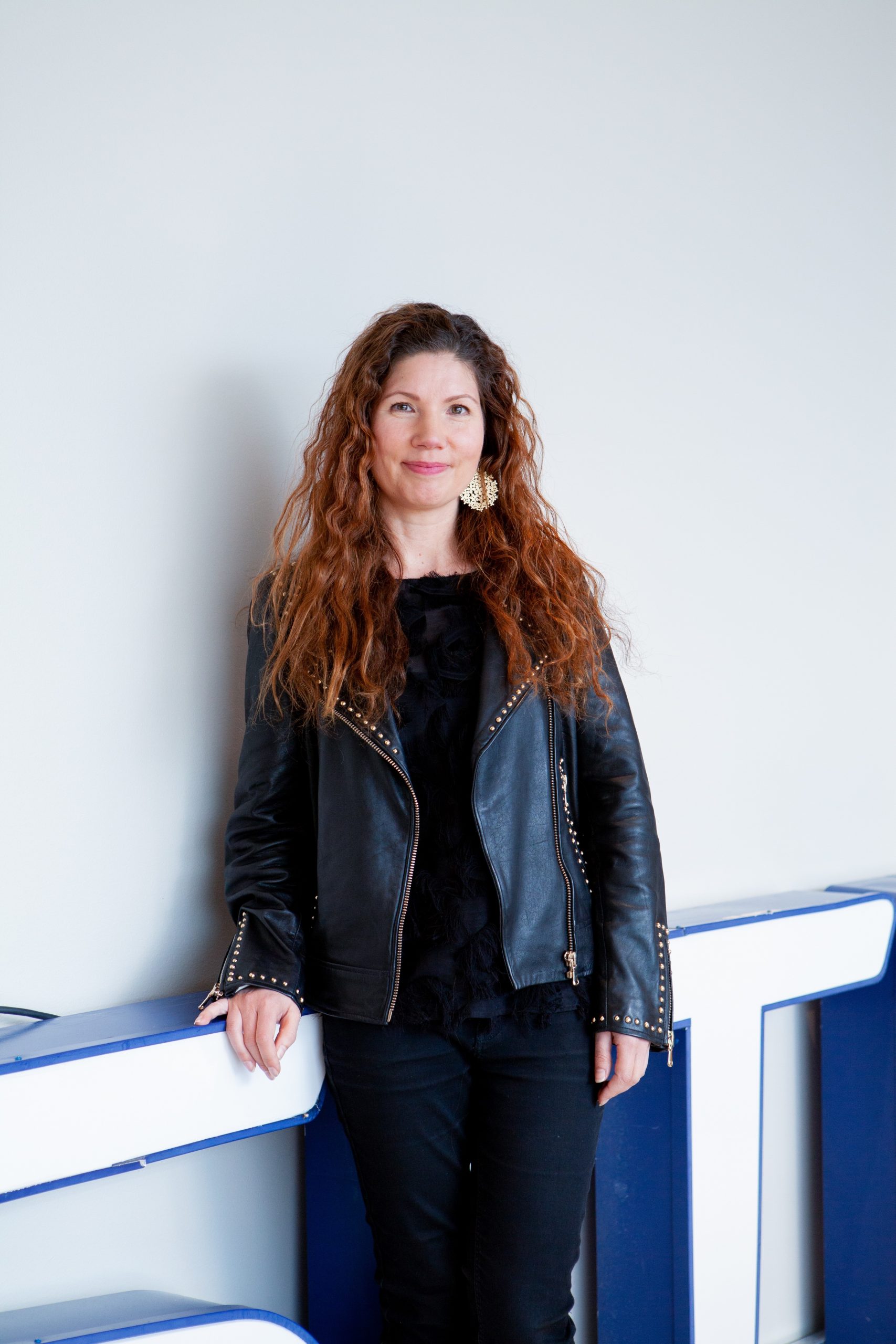
Global insights
Slovenia’s journey towards data-driven healthcare is part of a broader global movement. By learning from successful implementations worldwide and leveraging its strengths, Slovenia is poised to become an innovator in healthcare, offering improved outcomes, enhanced patient experiences, and an efficient and sustainable healthcare system for its citizens. Cases below1 serve as compelling evidence of the potential that lies ahead for the country, given its already promising trajectory in data management.
Over 180 countries have shared genomic sequences of COVID-19 variants on the GISAID platform. To date 2 million genomes have been catalogued. The platform is the most trusted for data sharing of COVID-19 genome data, with African and South American scientific contributions to the platform more than doubling between January – April 2021. Data has been used to assess vaccines and diagnostic medical devices.
Clinical trials data created using standardized data models and clear data governance processes such as creation of a data dictionary reduced the estimated costs of data sharing by 50% (from 3K to 2K in this study). You can find more information – here.
Researchers from the Behavioral Diabetes Institute and the Scripps Whittier Diabetes Institute examined caregivers’ experiences with real-time continuous glucose monitoring data sharing and its impact on quality of life and health outcomes for patients with type 1 diabetes. Most agreed that data sharing improved their quality of life by giving them peace of mind (88.4% parents; 87.7% partners), contributing to lowering their anxiety (84.8% parents; 86.3% partners), and helping them feel confident about their ability to help their child/partner (92.1% parents; 94.3% partners). You can find more information – here.
Green is the New Black
Fashion
editor
Alenka Žvikart
JOURNALIST AT THE ADRIATIC
The Green Capital. The Heart of Slovenia. A city that might sleep but never fails to recycle. In other words, Ljubljana. Ljubljana has ranked among one of the most sustainable cities in Europe and, on multiple occasions, earned the glamorous first place. And now the city is working hard to achieve a new goal: to be dressed to the nines – sustainably.
Fierce competitor
European capitals have always been prone to competing with one another – and sustainability is no exception. Ljubljana might be a small but fierce competitor. A green gem surrounded by nearby mountains, luscious greenery, drinkable water, 200 kilometres of cycling avenues, sophisticated architecture and a variety of eco-friendly shops is destined for success. Only one stroll through the city centre catches the eye of those with a passion for fashion and compassion for our planet. Second-hand stores are located on practically every corner, while the locals are not afraid to show off their vintage looks whilst strutting down the city’s many green carpets.
The Green Timeline
Ljubljana has become somewhat of a trendsetter when it comes to sustainability. In 2008, the city became the first capital to have an entirely car-free centre. In 2016, it was adorned with the title of the European Green Capital, given by the European Commission. In 2022, European Best Destinations and the distinguished Forbes magazine ranked Ljubljana first among Europe’s 20 Best Green Capitals.
Sustanable fashionistas
Ljubljana has already made unprecedented strides in eco-conscious urban development and commerce. But the domain currently experiencing rapid growth and innovation is sustainable fashion. With a growing customer base, many local and foreign businesses have begun to thrive. From second-hand shops to designer stores, they all have a common goal: fair trade and eco-friendly products. Original stores like Luci Clothing, Janja Videc, Nika Ravnik produce handmade and organic products for women that counteract fast fashion. Find the entire list of designers at this link.

